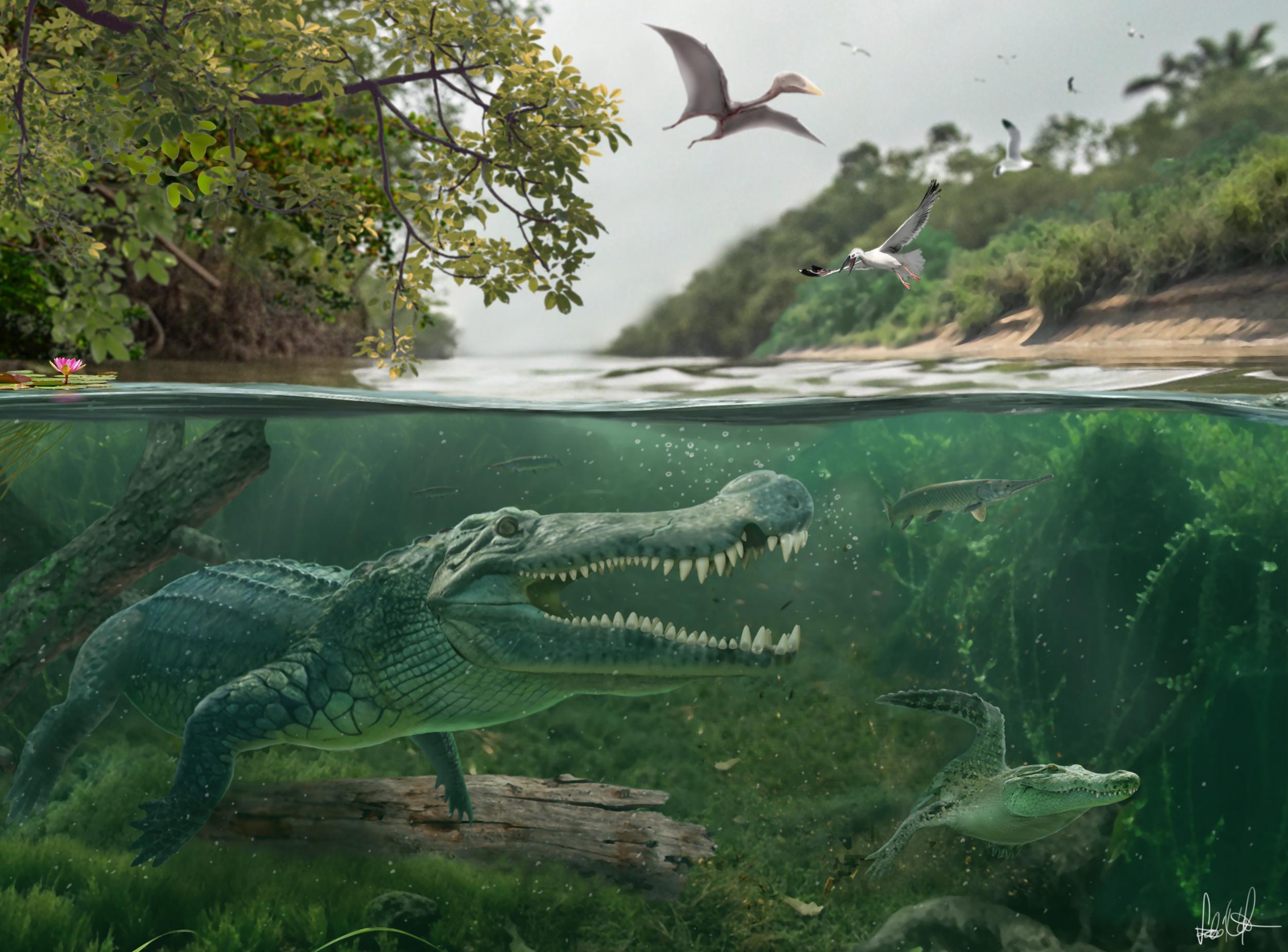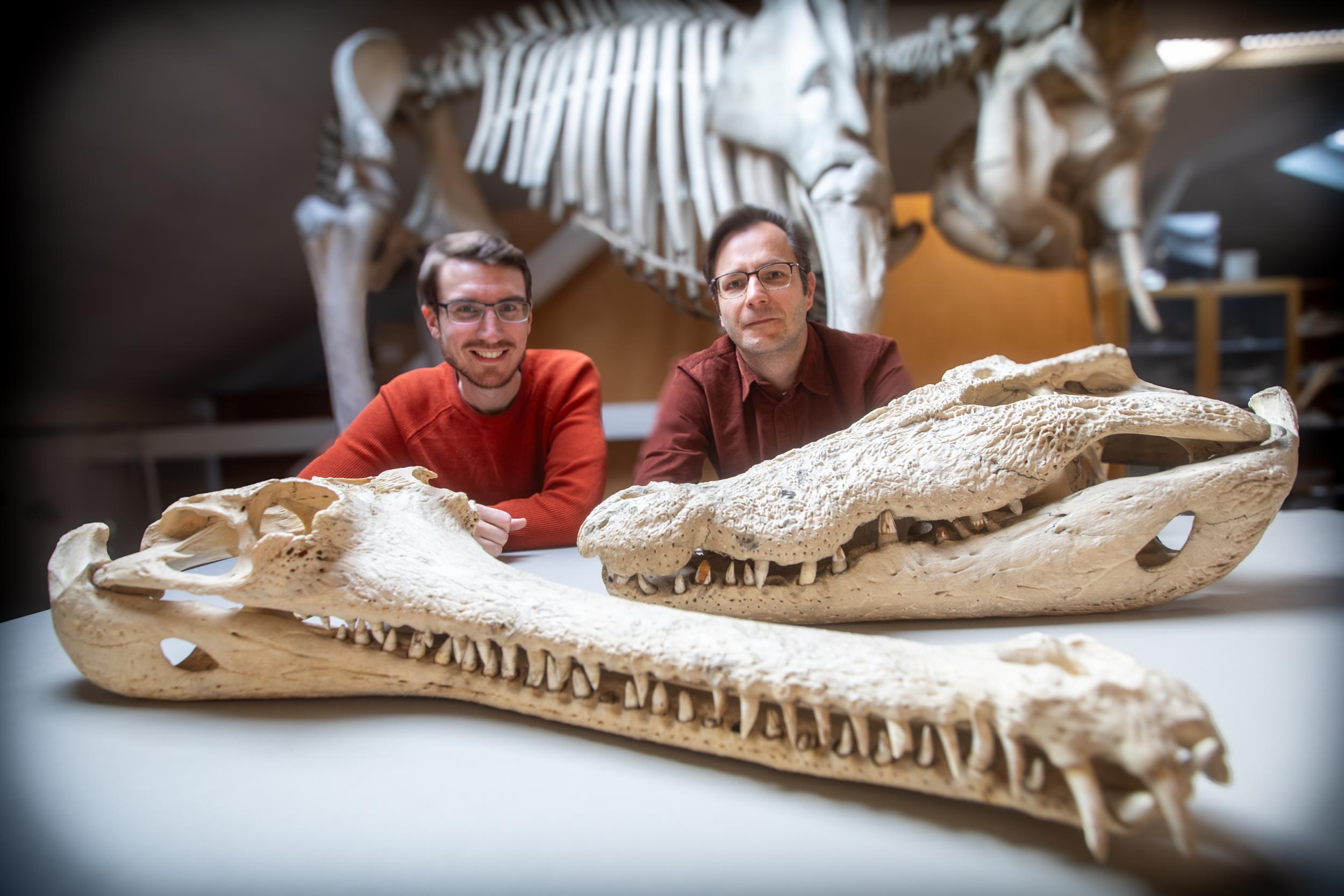The saltwater tolerance is what kept the dinosaur-eating giant crocodile alive, UT-led study reveals

Copyright: Márton Szabó
Deinosuchus lived in the wetlands and coastal areas of North America in the Cretaceous period, 82 to 75 million years ago -more than ten million years before the appearance of the famous Tyrannosaurus rex. This was also deduced from bite marks found even on the bones of early relatives of T. rex, explains the team leader, Dr. Márton Rabi.
The various species of Deinosuchus were among the largest crocodiles that ever lived. They were widespread in the swamps and lagoons of the western Atlantic and on both sides of a wide, shallow inland sea known as the Western Interior Seaway that extended across the continent from north to south in the middle and late Cretaceous period.
Salt water tolerance as an evolutionary advantage
Until now, Deinosuchus crocodiles were thought to be related to the freshwater alligators and caimans. It was unclear how they were able to spread widely in North America despite the obstacle posed by the Western Interior Seaway. Since the inland sea existed before the first Deinosuchus fossils, it is unlikely that the populations were separated later, says Rabi.
To determine Deinosuchus’ ancestry more precisely, the research team drew up a detailed family tree of crocodile species. The researchers collected extensive data from many skulls and skeletons of extinct species that had not previously been studied in detail; they also incorporated genetic information from crocodile species that are still alive today.
Our analysis showed very clearly that the Deinosuchus species were not closely related to alligators or caimans, nor to any living crocodilian species,” says Jules D. Walter, PhD student and first author of the study.
Deinosuchus came from a side linage that separated from the branch of the family tree leading to the species living today, such as the true crocodiles, alligators, caimans and gharials. “Deinosuchus was no ‘greater alligator’”, says Walter:
“Given this new placement within the family tree, we now assume that their ancestors’ tolerance of salt water has been preserved in the genus. Although Deinosuchus crocodiles did not live permanently in the sea, they could have crossed the Western Interior Seaway and spread out.”
At the end of the Cretaceous period, sea levels fell and the inland sea dried up. There are no more Deinosuchus fossils from this period; it may be that the various species became extinct as their vast wetland habitat was lost.
Giant crocodiles depend on a large, food-rich habitat

Copyright: University of Tübingen / Friedhelm Albrecht
The research team also reestimated the body length of the largest ‘terrible crocodile’, Deinosuchus riograndensis, which was previously thought to be between eight and twelve meters.
We arrive at more modest measurements of around 7.7 meters in total length, but there is evidence of incompletely preserved larger individuals. We don't have a complete skeleton. The Deinosuchus skull has a comparatively long snout, which we think led to an exaggerated earlier estimate", Walter says.
In their analysis, the researchers found that species of giant crocodiles have evolved independently of each other at least twelve times over the past 120 million years. “Around seven-meter-long individuals of living crocodile species, which was not far from the estimated size of Deinosuchus riograndensis, existed not only in prehistoric times, but at least until the 19th century,” says Rabi.
The researchers found that such giants evolved when the habitat was suitable: they needed extensive, highly productive wetlands or marine ecosystems to produce sufficiently large prey. “The only reasons why there may not be any living, truly gigantic crocodiles left are overhunting and habitat destruction,” concludes Rabi.
Latest Highlights:
aMU delves into the colonial history of Marseille aboard the Mars Imperium portal
Why do Spaniards feel lonely? A UAM-led study tells us
University of Salzburg celebrates cultural monument conservation success
Nobel Peace Prize Laureate Leymah Gbowee: knowledge and compassion together can make a difference
